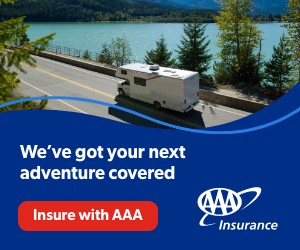Hitting the open road is a traveler’s dream. You get to decide where and when you want to go, how far you want to travel, what you want to see – it’s a freedom unlike any other form of traveling. However, that doesn’t mean that simply getting up and going is the best course of action. A significant amount of planning and preparation should go into any road trip you take. Here’s how to prepare for a road trip so that your next highway adventure is as carefree as you imagined.
How To Prepare Your Car for a Road Trip
Get Your Car Checked Beforehand
Your road trip can be over before it starts if your car is not up to the task. Before embarking on your journey, bring your car to an auto repair center for a thorough inspection.
Check that tires are properly inflated and in solid condition, fluids are topped-off or changed if they are dirty or contaminated, radiator and cooling system are in proper operation, and belts and hoses are in good shape.
If your car has a spare tire, make sure it is properly inflated and in working condition.
All these steps are relatively easy and inexpensive. But if you wait until something breaks or goes wrong, it could lead to a costly repair.
While You’re Gone
Preparing your car for a road trip could also mean the cars you are leaving behind.
If your road trip means keeping another vehicle at home, especially for more than a month, consider using a battery tender. These devices transfer power from an AC outlet to the car’s battery to keep it fully charged. It is also a good idea to fill your gas tank and add a fuel stabilizer, fill fluids and tires to appropriate levels, and remove anything that might attract critters, such as beverages (even water), snacks and pet food. Covering your car can protect the paint and prevent stains while you’re away.
When you return from your trip, start the vehicle and drive it gently for several miles. Then have your repair shop look it over.
More Ways to Prepare for a Road Trip
Plan for an Emergency
No matter how much preparation you put into your trip, emergencies can still arise. And when they do, you’ll want to be ready. In addition to having AAA Roadside Assistance on call, you should also have proper supplies on hand.
Certain items you should pack are a first aid kit, fire extinguisher, jumper cables, motor oil, radiator fluid, nonperishable food, drinking water, blankets and a roadside emergency kit with flares and flashlight. Keep a lug wrench and jack in the car in case you need to change a tire. If your vehicle does not come with a spare tire (around 30% of new cars do not), consider buying one. On a long car trip, a flat-tire kit may not be enough.
Make sure all your emergency supplies are easily accessible. Having them packed away deep within your car won’t help should you need them immediately.
Get pro tips and recommendations for the best roadside emergency kit.
Also check that all your important documents, such as registration and insurance, are up-to-date and stored safely should they be needed.
Know the Rules of the Road
If you’re traveling far from home, particularly through other states, brush up on any local driving laws that may be different than what you’re accustomed to.
For instance, in Northeastern states, interstate speed limits top off at 65 mph. However, out West, speed limits can go up to 80 mph. Another example – New York allows drivers to make a right turn at a red light. However, motorists are not allowed to turn on a red light in New York City unless a sign that permits it is posted.
Knowing laws like these can keep you safe and prevent you from getting a ticket.
Calculate the Cost
You should figure out, roughly, how much this trip is going to cost you. Even if you have prepaid for items such as hotel rooms, it’s a good plan to know how much money you should bring with you or have accessible. Running into financial troubles away from home is not a recipe for a joyous vacation.
A major cost on your trip will be gasoline. Before you head out, check the gas price averages of the states you’ll be passing through. You should also download the AAA Mobile App, which can show you the cheapest gas stations in the area you’re in. These gas saving tips can also help.
If you’re considering a rooftop carrier, “keep in mind that fuel economy could be reduced by up to 20%, depending on the design of the carrier,” said AAA Car Doctor John Paul.
Other cost considerations include tolls and attractions.

Plan Your Route
When planning a road trip – particularly a long one – you’ll want to spend a good amount of time mapping out your desired route. This means more than typing an address into your GPS.
Navigation systems serve an important function and are extremely useful when driving in unfamiliar territory. Following a GPS will get you to your desired location in the fastest, most direct route. But what if you prefer to take the scenic route? Or there’s a particular roadside attraction you’d like to visit?
A good idea is investing in an old-school paper map, on which you can see all the possible roadway options available to you and you can draw out your planned route.
In the end, planning your course on a paper map and then executing it through the help of GPS may be your best option.
Pick Your Stops
It’s not just your route that needs planning. You should also decide where you’re going to make your stops, whether they be for rests, meals or overnight stays.
It’s incredibly important to be honest with yourself in this department, particularly when stopping for the night. Sure, you may think you can pull a marathon driving session late into the evening, but it’s not a good idea. You could easily find yourself exhausted, opening yourself up to the dangers of drowsy driving. Plan your overnight stops conservatively. It’s better to get to your location alert, feeling like you could drive another hour or two than finding yourself tired but still two hours from your destination.
AAA recommends scheduling a break for every two hours or 100 miles, traveling with an alert passenger or taking turns driving, and, if necessary, pulling over to a safe place for a 20- to 30-minute nap.
Get Ready to Go the Day Before
When the day comes to hit the road, every detail should be taken care of. The car should be packed, gas tank should be filled, road maps ready. All you should have to do is wake up and get out the door. But speaking of waking up, make sure to get a good night’s sleep and have some food in your stomach before you depart. You want to be in the best condition possible before you get behind the wheel. This will go a long way to ensuring you have a fun and safe road trip.
Need a ride? Learn about exclusive Hertz discounts for AAA members.
What tips do you have for planning the perfect road trip? Tell us in the comments below!
When you make a purchase through a third-party link, AAA Northeast could receive revenue. As an Amazon Associate, we earn from qualifying purchases.


















